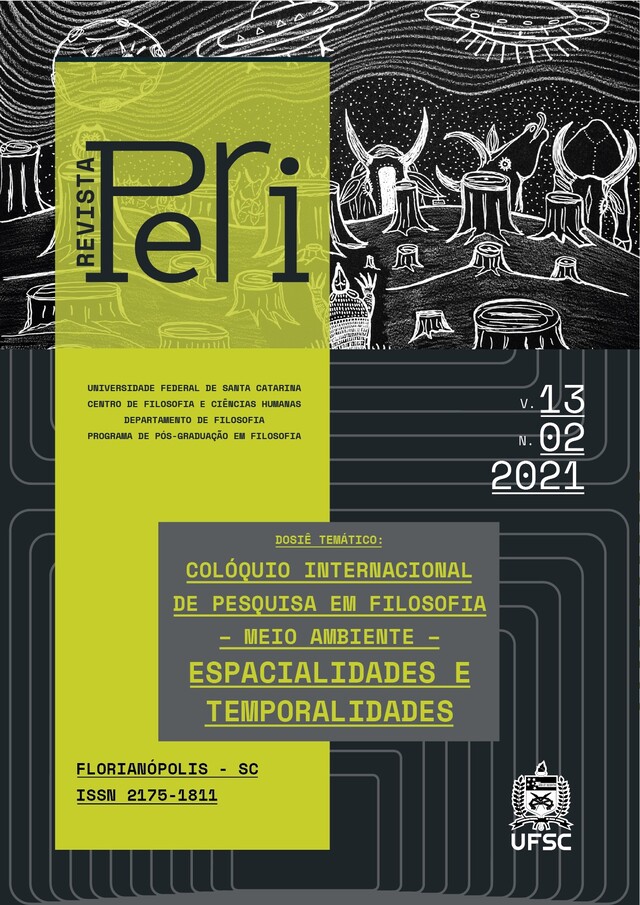Impactos ambientais da técnica de gene drive para o controle de epidemias: alcances e limites do princípio da precaução
Schlagworte:
gene drives, princípio da precaução, biossegurança, riscos ecológicosAbstract
O trabalho discute a aplicação do princípio da precaução no manejo dos riscos ambientais decorrentes do uso de gene drives para o controle de epidemias. Gene drives consistem em uma técnica para a criação de organismos geneticamente modificados, os quais são lançados em um ecossistema com o objetivo de disseminarem determinada variação genética e prevalecerem sobre os organismos nativos. Entre os usos possíveis desta técnica, está o controle de epidemias. Apesar de seus benefícios, avaliar o impacto de gene drives para o meio ambiente revela-se um desafio. No âmbito da biotecnologia, formulou-se o chamado princípio da precaução como estratégia para fundamentar decisões cujas consequências são incertas. Este trabalho destaca as contribuições do referido princípio para guiar o uso de gene drives, ao passo em que reflete sobre seus limites, confrontando-o com um modelo alternativo de manejo de riscos: o princípio da proação.
Literaturhinweise
ADORNO, R. The precautionary principle: a new legal standard for a technological age. Journal of International Biotechnology Law, v. 1, p. 11-19, 2004.
BERG, P.; BALTIMORE, D.; BOYER, H.; COHEN, S.; DAVIS, R.; HOGNESS, D. et al. Potential biohazards of recombinant DNA molecules. Science, v. 185, n. 4148, p. 303, 1974.
BERG, P.; BALTIMORE, D.; BRENNER, S.; ROBLIN, R. O.; SINGER, M. F. Summary statement of the Asilomar conference on recombinant DNA molecules. Proceedings of the National Academy of Sciences of the United States of America, v. 72, n. 6, p. 1981-1984, 1975.
BERG, P.; JACKSON, D.; SYMONS, R. Biochemical method for inserting new genetic information into DNA of simian virus 40: circular SV40 DNA molecules containing lambda phage genes and the galactose operon of Escherichia coli. Proceedings of the National Academy of Sciences of the United States of America, v. 69, n. 1, p. 2904-2909, 1972.
BUCHANAN, A. Better than human: the promise and perils of enhancing ourselves. Oxford: Oxford University Press, 2011.
CARROLL, D.; CHARO, R. A. The societal opportunities and challenges of genome editing. Genome Biology, v. 16, n. 242, p. 1-9, 2015.
CHAMPER, J.; BUCHMAN, A.; AKBARI, O. S. Cheating evolution: engineering gene drives to manipulate the fate of wild populations. Nature Review: Genetics, v. 17, n. 3, pp.146-59, 2016.
COHEN, S.; CHANG, A.; BOYER, H.; HELLING, R. Construction of biologically functional bacterial plasmids in vitro. Proceedings of the National Academy of Sciences of the United States of America, v. 70, n. 11, p. 3240-3244, 1973.
COMMISSION ON THE ETHICS OF SCIENTIFIC KNOWLEDGE AND TECHNOLOGY. The precautionary principle. Paris: UNESCO, 2005.
CZERESNIA, D.; MACIEL, E.; OVIEDO, R. Os sentidos da saúde e da doença. Rio de Janeiro: Fiocruz, 2013.
EDGINGTON, M.; ALPHEY, L. S. Modeling the mutation and reversal of engineered underdominance gene drives. Journal of Theoretical Biology, v. 479, pp. 14-21, 2019.
GANTZ, V. M.; JASINSKIENE, N.; TATARENKOVA, O.; FAZEKAS, A.; MACIAS, V. M.; BIER, E. et al. Highly efficient Cas9-mediated gene drive for population modification of the malaria vectormosquito Anopheles stephensi. Proceedings of the National Academy of Sciences of the United States of America, v. 112, pp. 6736-6743, 2015.
GRIFFITHS, A.; MILLER, J.; SUZUKI, D.; LEWONTIN, R.; GELBART, W. An introduction to genetic analysis. New York: W. H. Freeman, 2000.
HAMMOND, A.; GALIZI, R.; KYROU, K.; SIMONI, A.; SINISCALCHI, C.; KATSANOS, D. et al. A CRISPR-Cas9 gene drive system targeting female reproduction in the malaria mosquito vector Anopheles gambiae. Nature Biotechnology, v. 34, n. 1, pp. 78-83, 2016.
HAYES, A. W. The precautionary principle. Archives of Industrial Hygiene and Toxicology, v. 56, p. 161-166, 2005.
MORE, M. The proactionary principle. In: MORE, M; VITA-MORE, N. (Org.). The transhumanist reader: classical and contemporary essays on the science, technology and philosophy of the human future. Hoboken: Wiley-Blackwell, 2013.
NATIONAL ACADEMIES OF SCIENCES, ENGINEERING, AND MEDICINE. Gene drives on the horizon: advancing science, navigating uncertainty, and aligning research with public values. Washington, DC: The National Academies Press, 2016.
RAN, F. A.; HSU, P. D.; WRIGHT, J.; AGARWALA, V.; SCOTT, D. A.; ZHANG, F. Genome engineering using the CRISPR-Cas9 system. Nature Protocols, v. 8, pp. 2281–2308, 2013.
REARDON, S. Welcome to the CRISPR zoo. Nature, v. 531, n. 7593, p. 160-163, 2016.
ROMEIS, J; COLLATZA, J.; GLANDOR, D.; BONSALLC, M. The value of existing regulatory frameworks for the environmental risk assessment of agricultural pest control using gene drives. Environmental Science & Policy, v. 108, pp. 19-36, 2020.
RUSSO, E. The birth of biotechnology. Nature, v. 421, pp. 256-457, 2003.
SIMONI, A.; HAMMOND, A. M.; BEAGHTON, A. K.; GALIZI, R.; TAXIARCHI, C.; KYROU, K. et al. A male-biased sex-distorter gene drive for the human malaria vector Anopheles gambiae. Nature Biotechnology, v. 38, pp. 1054–1060, 2020.
VAN DEN BRINK, P.; CHOUNG, C. B.; LANDIS, W.; STAUBER, J. L. New approaches to the ecological risk assessment of multiple stressors. Marine and Freshwater Research, v. 67, n. 4, pp. 429-439, 2016.
WORLD HEALTH ORGANIZATION. World malaria report 2020: 20 years of global progress and challenges. Geneva: World Health Organization, 2020.
Downloads
Veröffentlicht
Ausgabe
Rubrik
Lizenz
1. Autores mantém os direitos autorais e concedem à revista o direito de primeira publicação, com o trabalho simultaneamente licenciado sob a Creative Commons Attribution License que permite o compartilhamento do trabalho com reconhecimento da autoria do trabalho e publicação inicial nesta revista.
2. Autores têm autorização para assumir contratos adicionais separadamente, para distribuição não-exclusiva da versão do trabalho publicada nesta revista (ex.: publicar em repositório institucional ou como capítulo de livro), com reconhecimento de autoria e publicação inicial nesta revista.
3. Autores têm permissão e são estimulados a publicar e distribuir seu trabalho online (ex.: em repositórios institucionais ou na sua página pessoal) a qualquer ponto antes ou durante o processo editorial, já que isso pode gerar alterações produtivas, bem como aumentar o impacto e a citação do trabalho publicado (Veja O Efeito do Acesso Livre).






